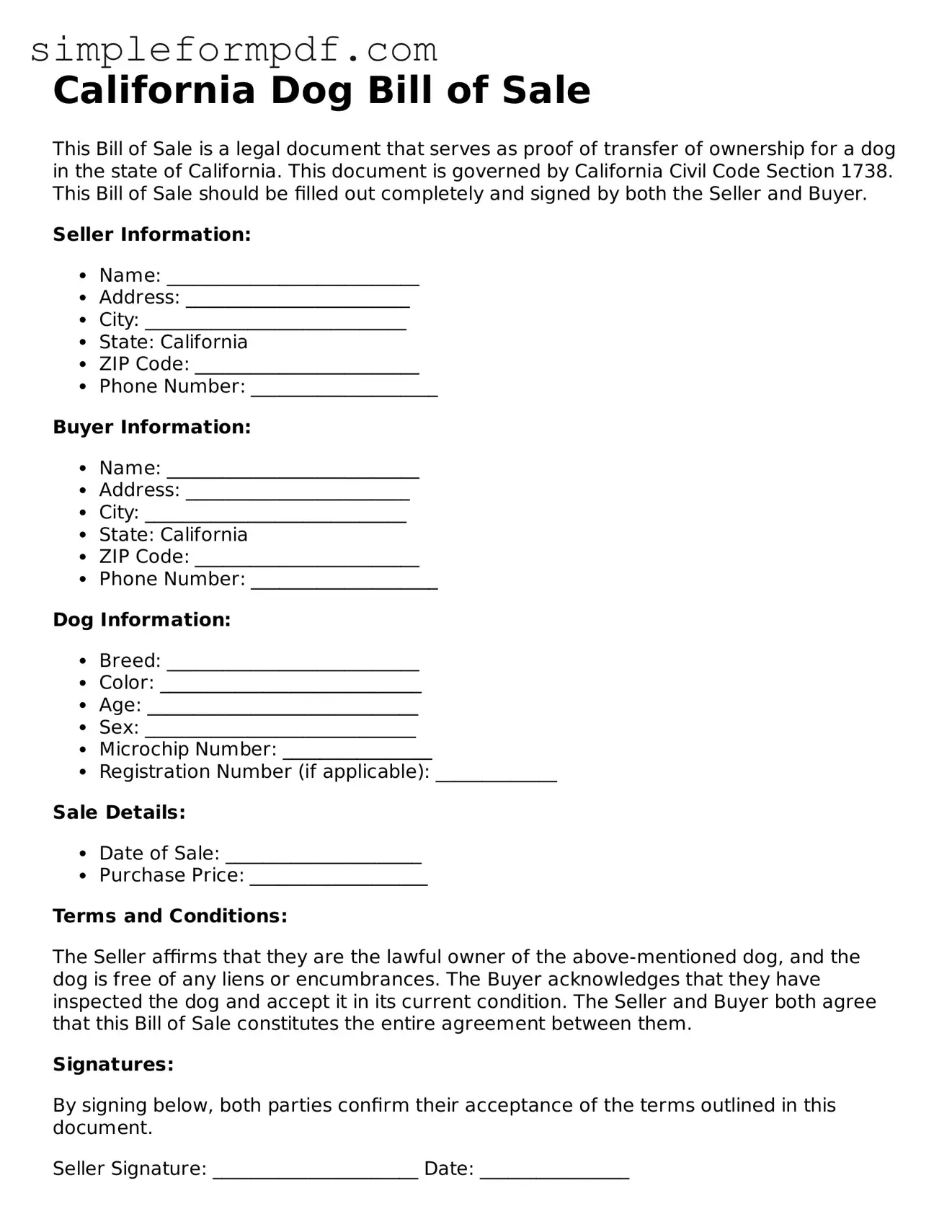California Dog Bill of Sale
This Bill of Sale is a legal document that serves as proof of transfer of ownership for a dog in the state of California. This document is governed by California Civil Code Section 1738. This Bill of Sale should be filled out completely and signed by both the Seller and Buyer.
Seller Information:
- Name: ___________________________
- Address: ________________________
- City: ____________________________
- State: California
- ZIP Code: ________________________
- Phone Number: ____________________
Buyer Information:
- Name: ___________________________
- Address: ________________________
- City: ____________________________
- State: California
- ZIP Code: ________________________
- Phone Number: ____________________
Dog Information:
- Breed: ___________________________
- Color: ____________________________
- Age: _____________________________
- Sex: _____________________________
- Microchip Number: ________________
- Registration Number (if applicable): _____________
Sale Details:
- Date of Sale: _____________________
- Purchase Price: ___________________
Terms and Conditions:
The Seller affirms that they are the lawful owner of the above-mentioned dog, and the dog is free of any liens or encumbrances. The Buyer acknowledges that they have inspected the dog and accept it in its current condition. The Seller and Buyer both agree that this Bill of Sale constitutes the entire agreement between them.
Signatures:
By signing below, both parties confirm their acceptance of the terms outlined in this document.
Seller Signature: ______________________ Date: ________________
Buyer Signature: ______________________ Date: ________________
